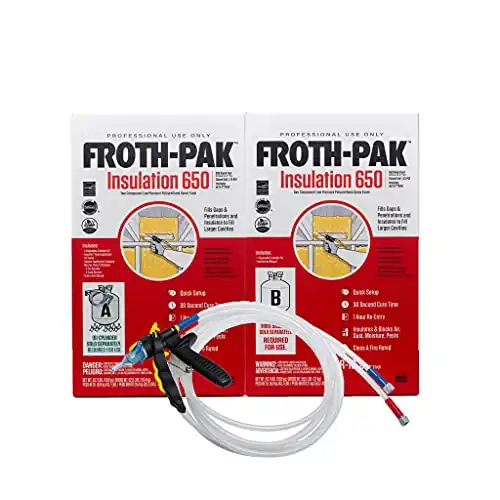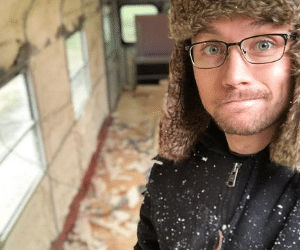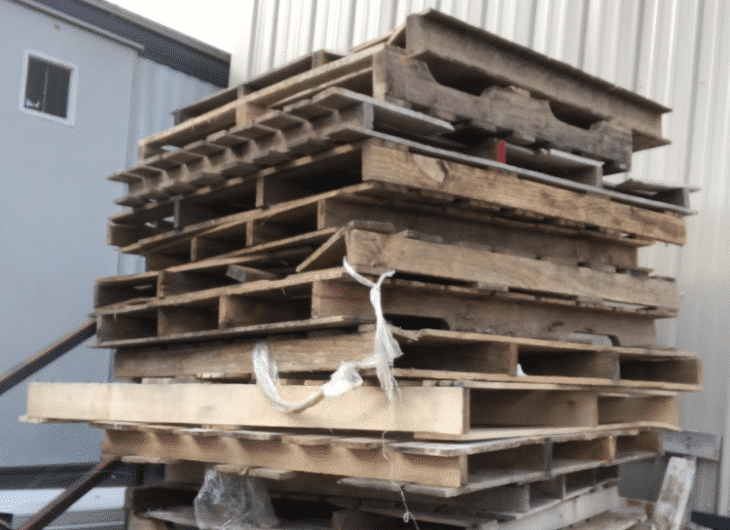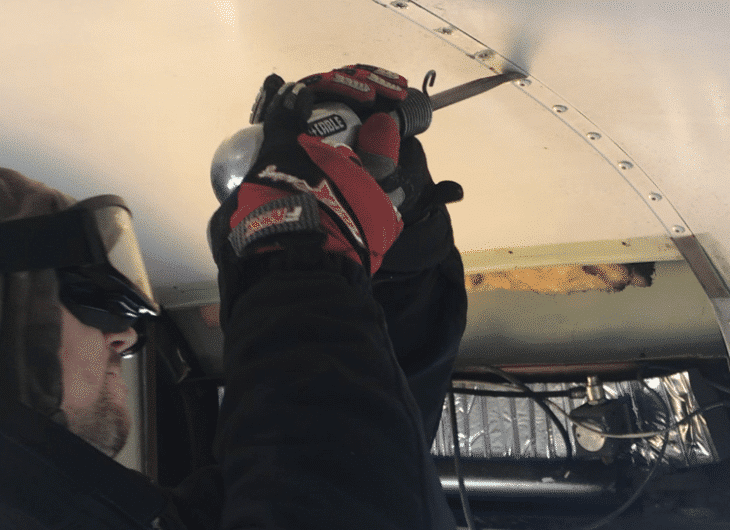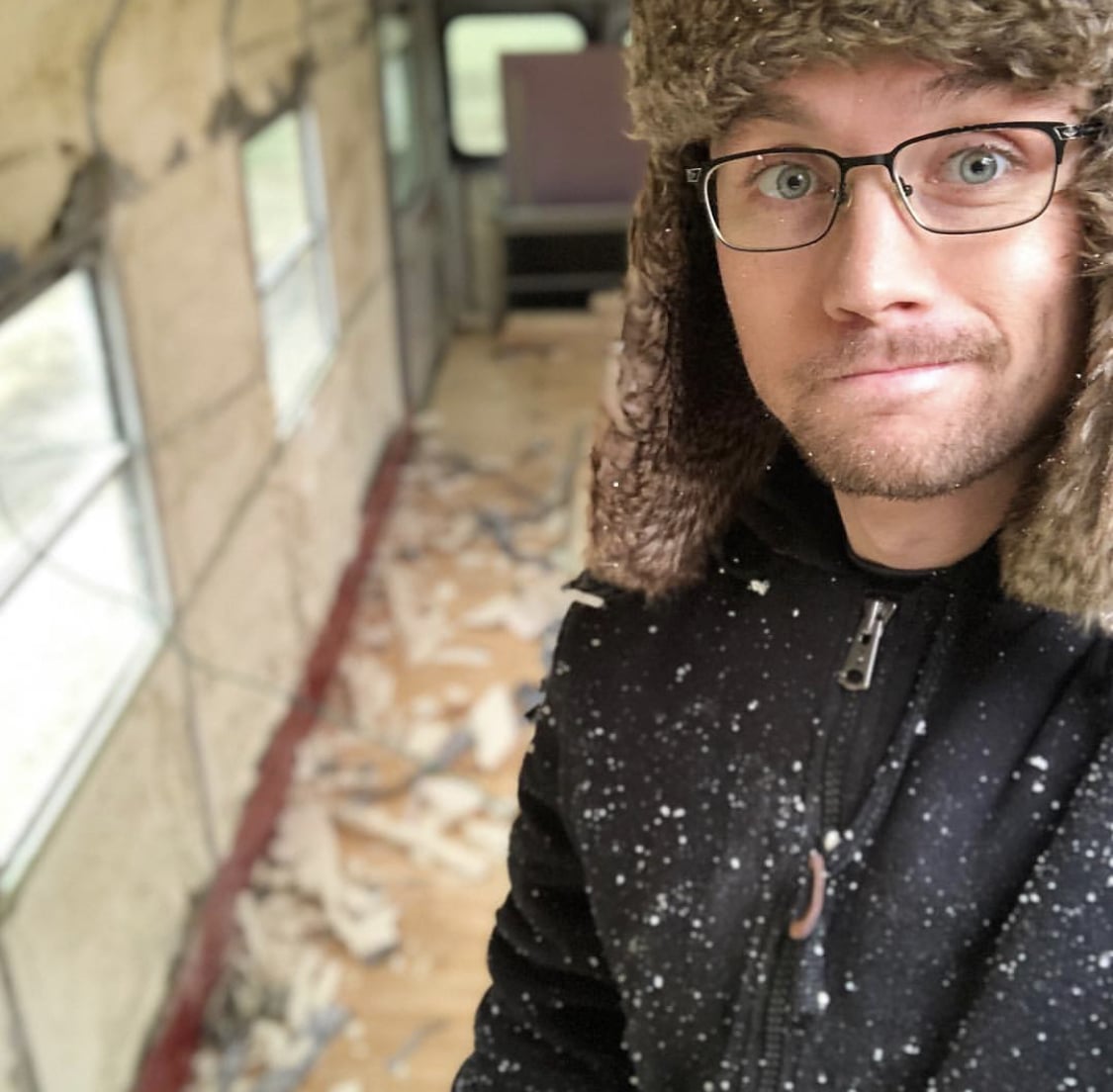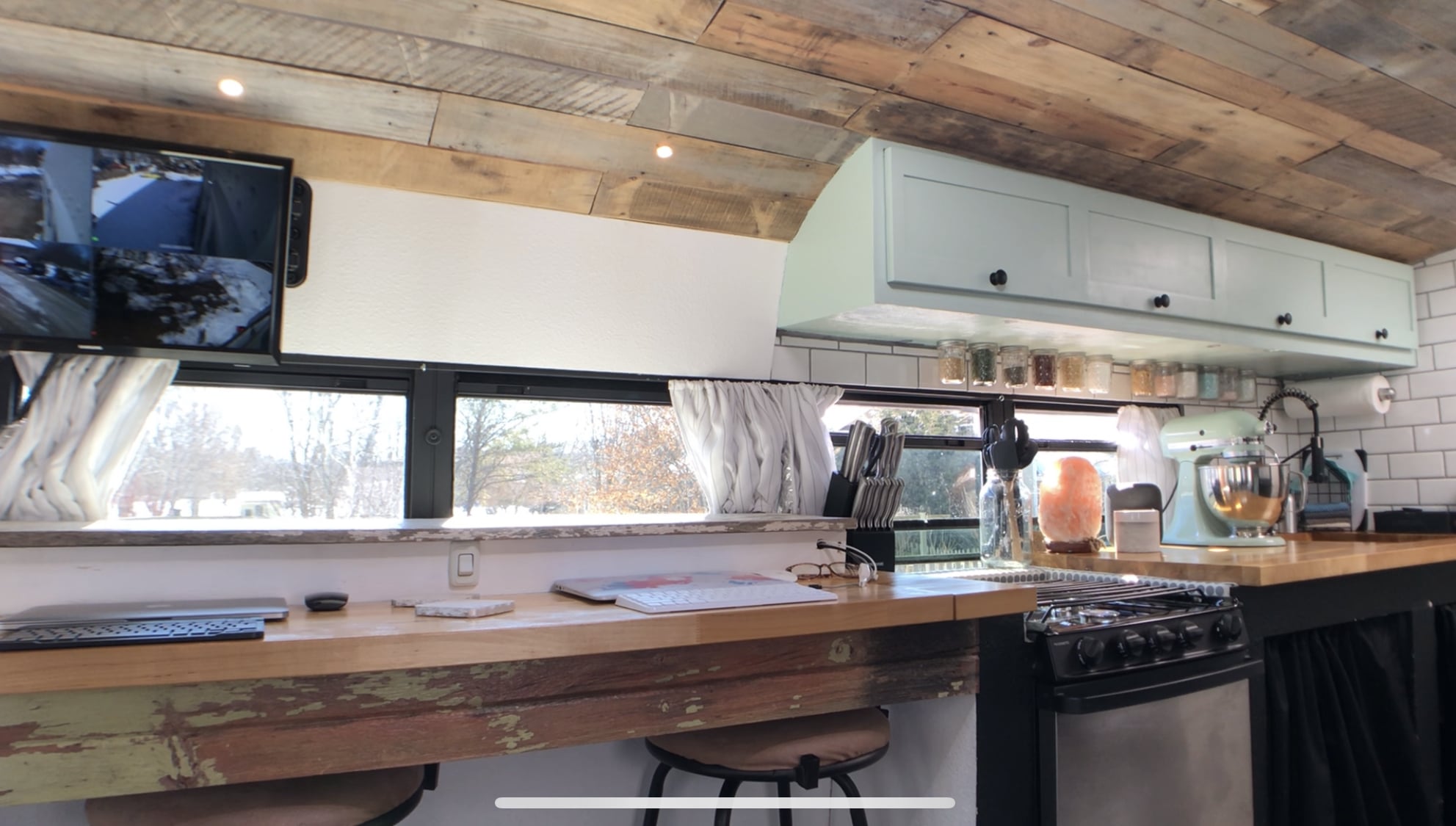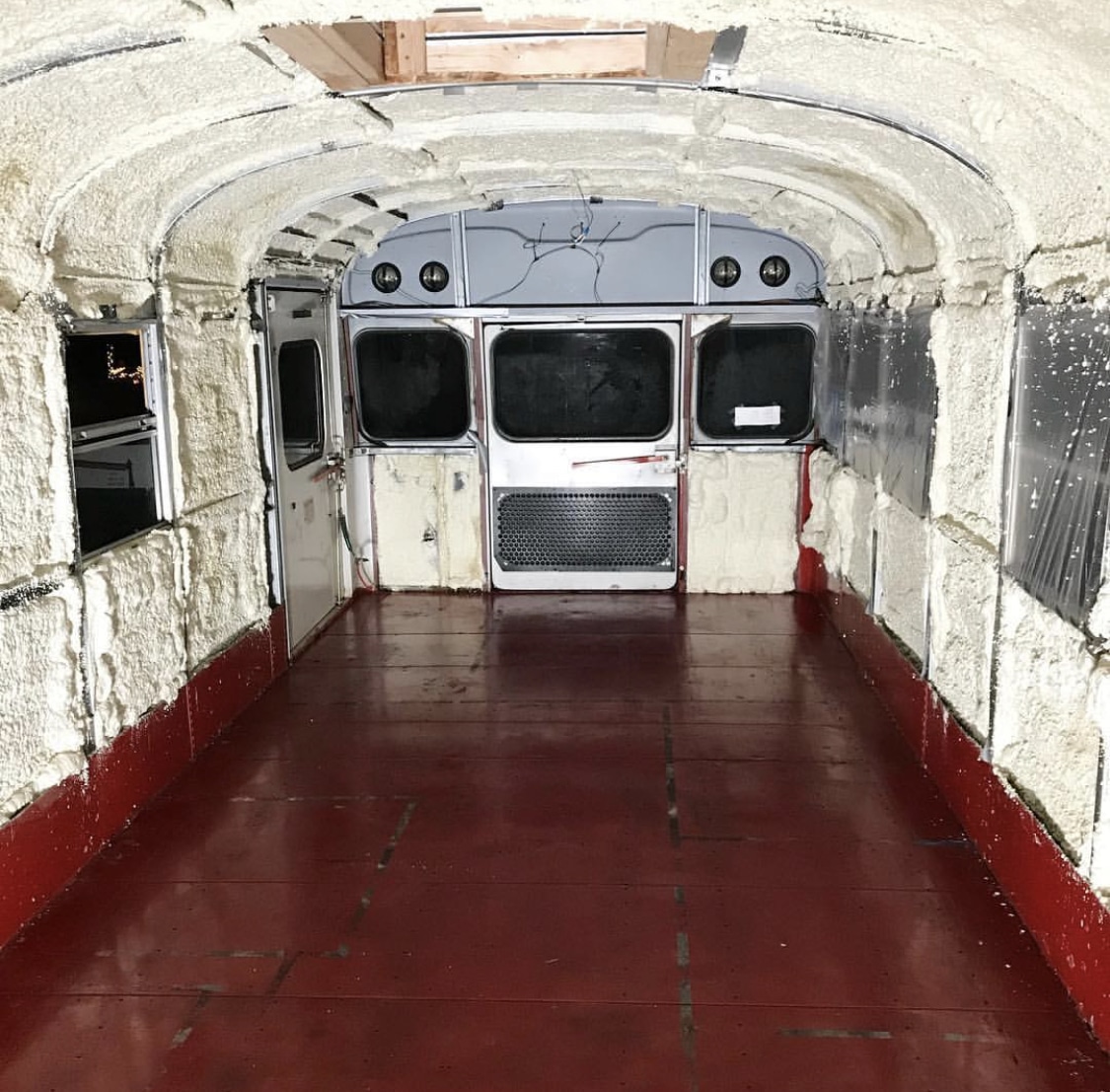
Skoolie Spray Foam Insulation Review
Living in a Spray Foam Insulated Skoolie – 1 Year Update
After 1 year of living in our skoolie with spray foam insulation, we are really glad we went with spray foam insulation in a skoolie compared to the other options out there.
We went through a Wisconsin winter with temperatures down to – 30° F, with only a few good days of sun. We kept the temperature in our skoolie at around 69° F during the day and 63° F at night with a heating combination of a Cubic Mini Grizzly wood stove and a Suburban propane heater. During the coldest weeks, we went through a 20 lb propane tank ($15) about every 3-4 days and burned a pack of compressed wood blocks ($2 per pack) every 1.5 days.
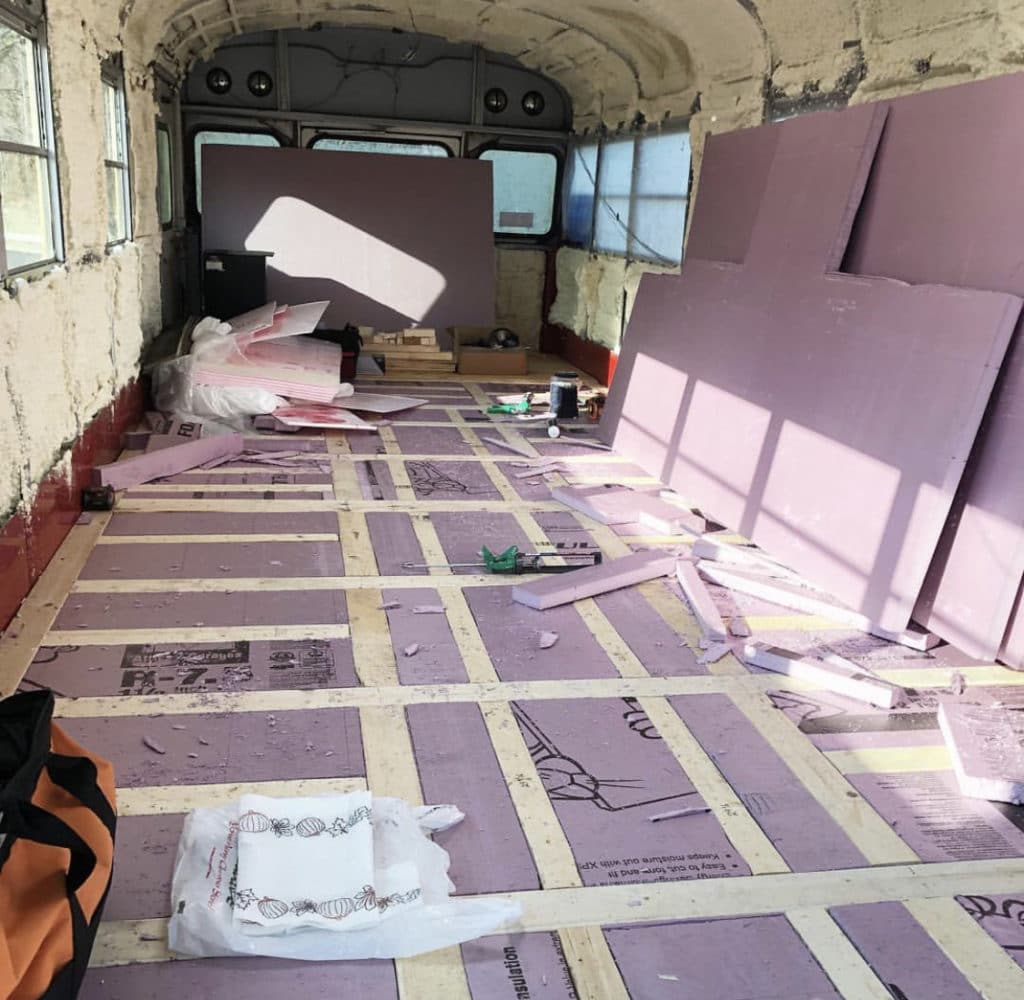
Our summer reached temperatures near 100° F with full sunny days, where the inside of the bus would be about 82° F. Most days averaged between 80° – 87° F outside, where the inside of the bus was around 77° F. However, we do have a small 400W window AC unit installed into the back of our bus, so we were able to bring down the temperature to about 75 ° F in the front, and mid-60° in the back.
For insulation, we have spray foam in the walls and ceiling, with pink sheet between the 2×4’s in our floor. Our floor also has a thermal barrier breaking layer of several fiber board (looks like a black sheet of plywood), which is between the metal and the 2×4 framing and 1.5″ pink sheet foam.
The original school bus windows actually became more of our pain point with trying to maintain temperature. Our insulated skoolie curtains help to block radiating heat or cold, but will not stop drafts on very windy days. We highly recommend window plastic if you have original school bus windows during extreme cold temperatures. The insulated curtains work fine by themselves during high heat days.
Had we not done spray foam, I believe we would have struggled more.
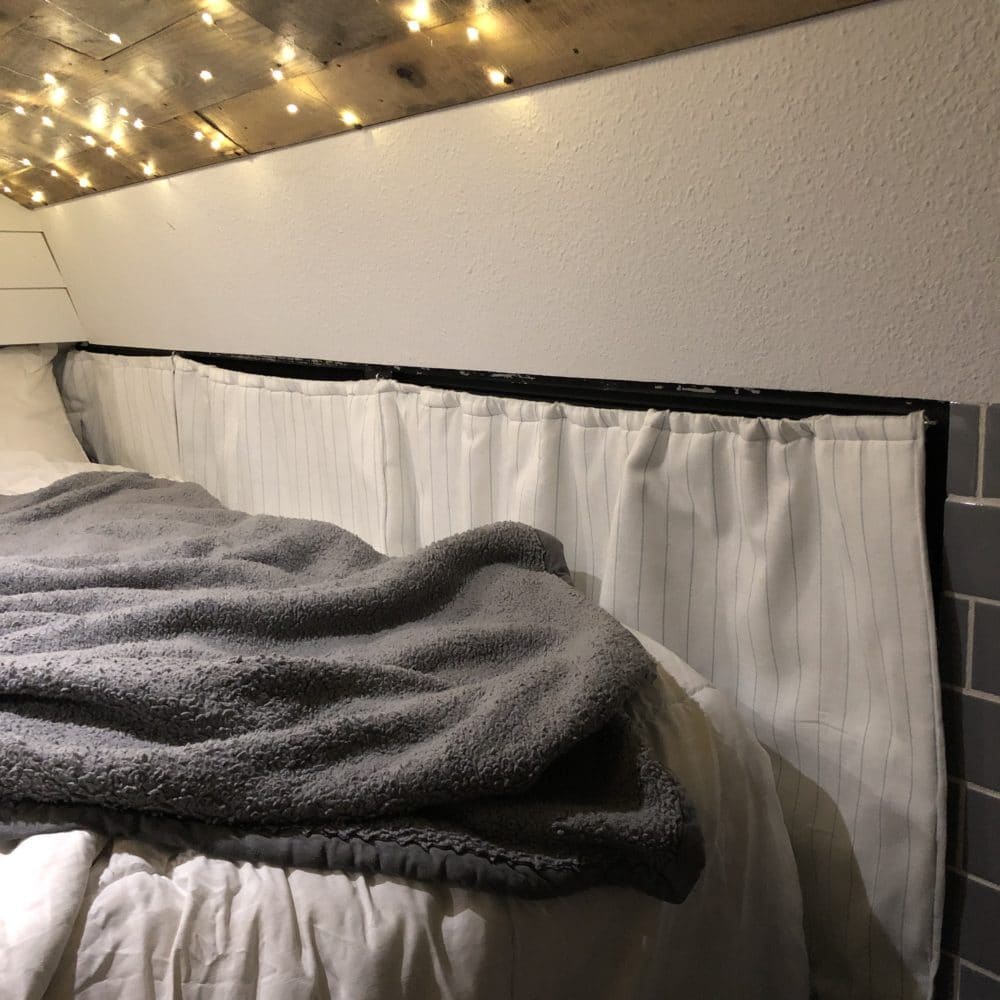
The rest of this article explains why we recommend skoolie spray foam insulation, the skoolie spray foam costs, and a guide with tips on how to spray foam insulate a skoolie. I’ll also go through a few tips on what else we wish we would have done beyond just spray from in the walls and ceiling.
Skoolie Insulation Choices
Other best skoolie insulation options
Why Spray Foam in a School Bus Conversion?
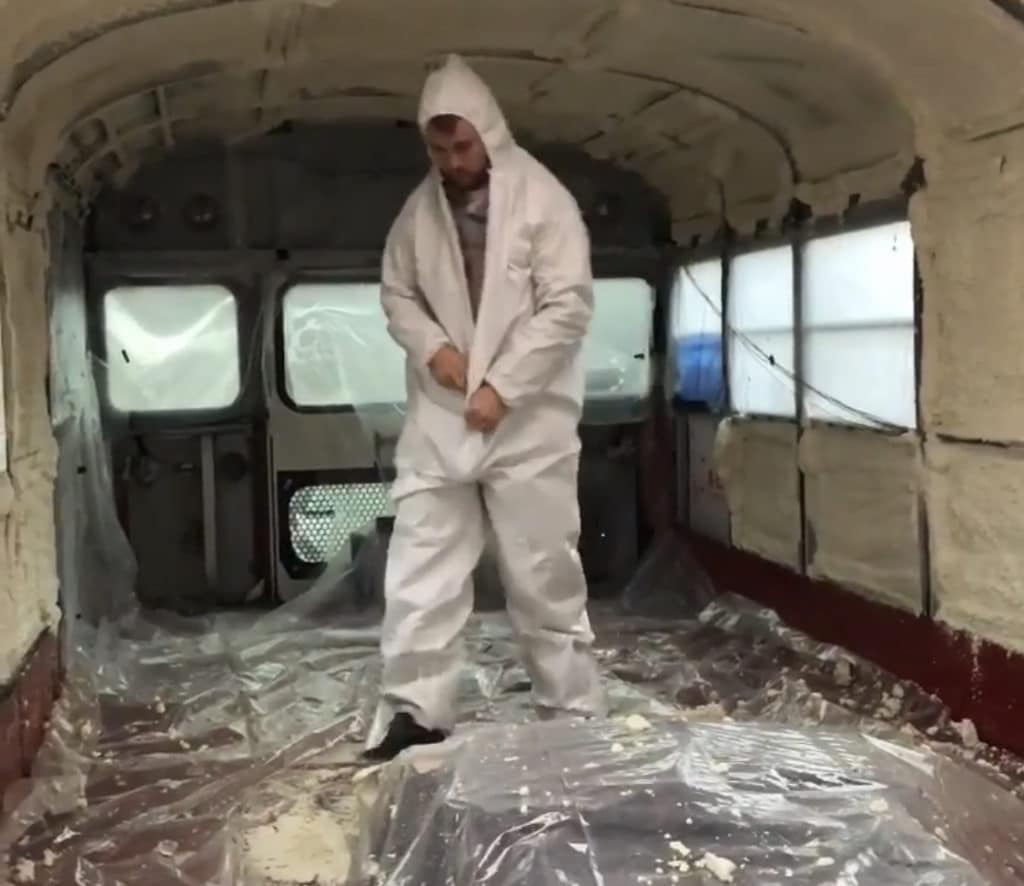
1. It’s Really Fun!
There are a few more important reasons I’ll mention, but I do have to touch on spray foaming a school bus is a really cool experience. When you are doing spray foam insulation in a school bus conversion, it almost feels like you are a part of the Ghostbusters crew helping to spray down the giant Stay Puft Marshmallow Man. I’ll dive more into our awesome experience of how I had a little too much fun in just a little bit.
2. Highest R-Value Option
The second reason is the R-value. R-values determine the amount of heat transfers through the ceiling/floor/wall you are insulating. The higher the R-value, the less heat will transfer and the better your school bus conversion insulation will be. With that said, you have limited space in the walls.
You can either use fiberglass or 1.5 – 2″ pink insulation board, which has an R-Value of 6-9, depending on the thickness you can use/stuff in there.
Spray foam insulation in a skoolie would bump your R value up to 9-14, depending on the amount you can afford and the room you have between the exterior and interior walls. The R-value of your spray foam in your skoolie also depends on how good you are at spraying it evenly on the walls. No worries though – spray foam insulation sounds a little more intimidating than it really is…
3. Air-Sealing Properties
Another reason is the air-sealing properties of spray foam. Spray foam comes out as a liquid, expands in place, and cures in just a few minutes. The spray foam liquid can be sprayed into the smallest of spaces. When it expands, you can expect any area you sprayed to be sealed off. Now, it isn’t a 100% sealer for water and everything leaking if your school bus metal has holes or something, but you will have much less air movement from the exterior of the bus, through the walls, and into the bus, and vise-versa.
4. No Need for Seperate Moisture Barrier
If you use spray foam and fill in the entire cavity between the metal ribs, you will not need an extra moisture barrier as you will completely break the interior panels from the exterior metal of the bus. For all other insulation types, it is recommended that you use some type of moisture barrier to help stop condensation from occurring between the interior and exterior walls. A little word of caution, if you feel like you didn’t do the best job on your skoolie spray foam insulation, you might want to use a layer of moisture barrier to be safe.
5. It is Easy!
Finally, it is much easier (and more fun!) to work with. I talked about the fun part, but it is also really easy to use. You do have to tape and plastic everything you don’t want to get this stuff on before you apply the spray foam insulation in your school bus conversion, which we will discuss. Yet, prepping is the longest process of the entire skoolie spray foam insulation process.
Spraying our entire bus with 2 layers took less than an hour.
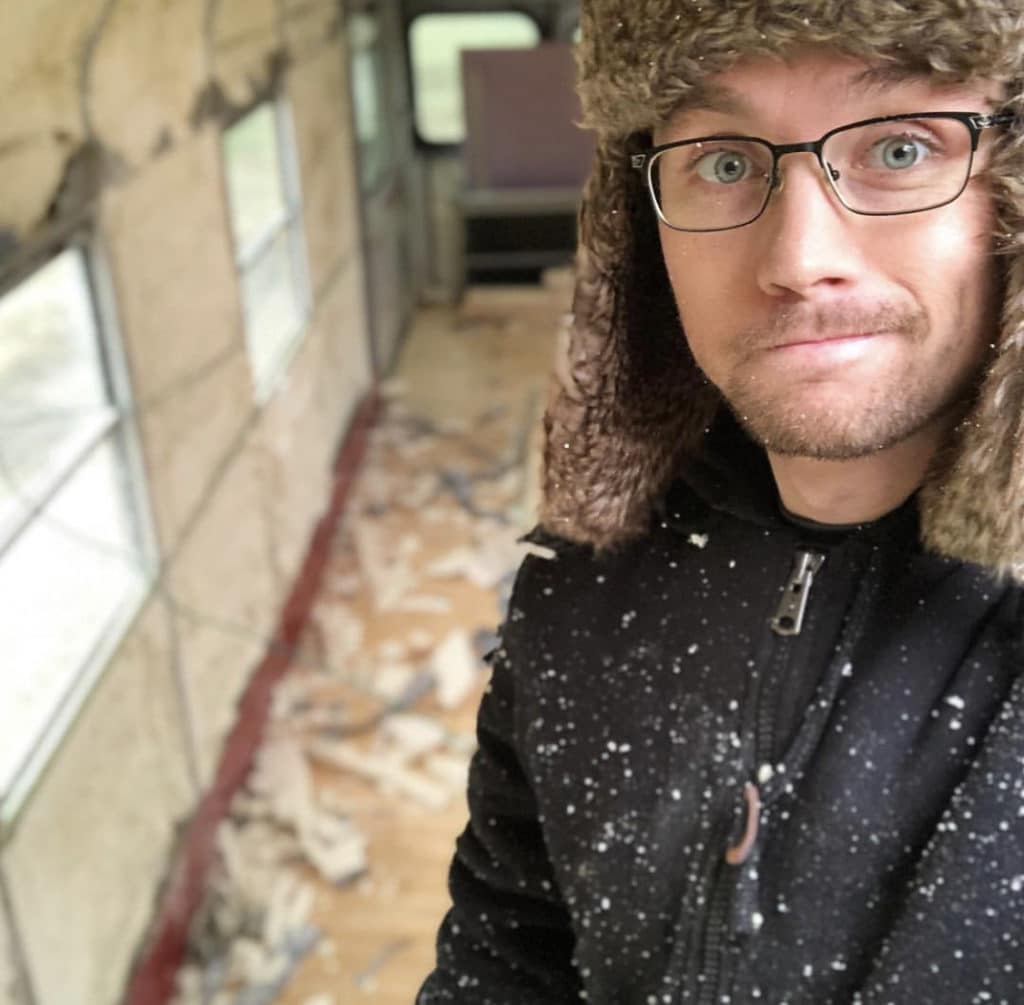
The Downside: Cost
There is only ONE downside to using spray foam in a skoolie: COST!
It would be much cheaper to use pink sheet foam or fiberglass insulation. With that said, if you plan on living in your school bus conversion full-time like us or traveling in it into colder climates, also like us, then you will want to spend the extra money on insulation if you can afford to…
As we sit here right now in mid-February of Wisconsin, we just went through a week where the temperatures plummeted down to -50° F (-45° C)… Yeah, freaking nuts right! With our entire family living up here, we do plan on being here for the holidays in winters. Well, at least until a da after New Years and we’ll pack up and floor-it to Florida.
So… our school bus conversion insulation was a very high priority for us.
We have even taken special precautions with designing our school bus conversion layout, placement of covered school bus windows, and figuring out how to easily cover the windows we do not cap when we are in an area experiencing extremely cold or hot weather conditions. We do not want to blow through our LP gas or have to stoke our little potbelly stove during the middle of the night to keep us from getting frost bite. We also don’t want to use up electricity with our air conditioner for more than a few hours a day on extremely hot days only.
If you plan on being in cold, winter conditions or hot temperatures for longer durations of time, you might want to figure out where you can cut costs to use spray foam insulation.
How Much Does Skoolie Spray Foam Insulation Cost?
We bought 3 kits from Menard’s home improvement store that were able to do 200 sqft each. Each kit originally cost around $330. However, we did get them on sale – well, actually rebates.
We purchased two of them with $110 rebate each as a Black Friday deal, so those two kits ended up being $240 each after we received $220 in rebates back. We then got another kit with a 11% rebate, since Menard’s has 11% rebate weekends, so that third kit we got another $33 in rebates back.
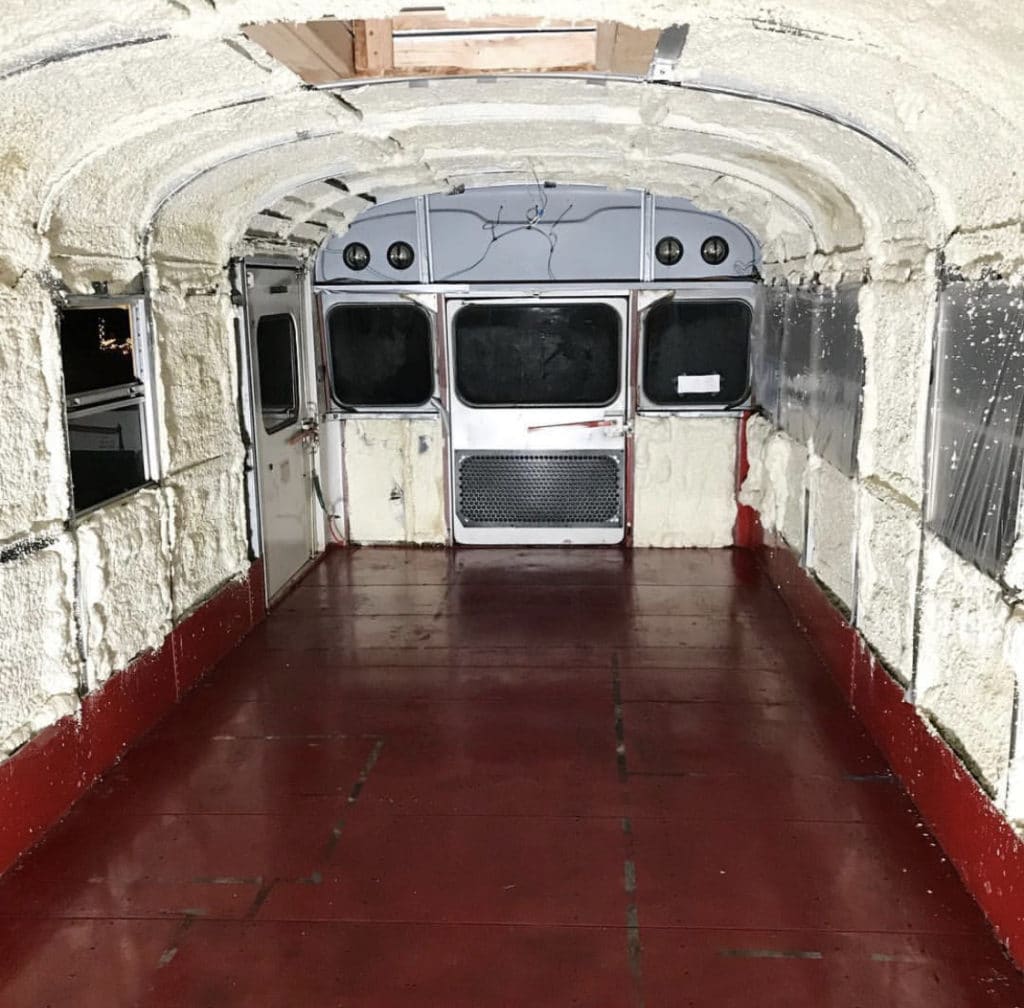
Total Cost Upfront: $990
In-Store Credit Rebate: $253
Actual Cost: $737
$737 in just spray foam insulation for a skoolie is an investment, since the same amount in pink sheet foam would be $300-400 total depending on the thickness. Also, you could get cheaper insulation, like scrap pink sheet insulation from random places or old house fiberglass insulation. You could also choose to just keep the original school bus insulation in your skoolie conversion.
Again, all of our family is in Wisconsin… since we will be back in Wisconsin for at least November and December holidays, having good insulation was a must! Also, it will be nice for maintaining temperature in our skoolie no matter what climate we are in – cold, hot, sunny, blazing…
